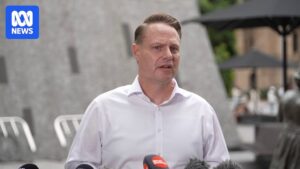
Labor has secured a commanding lead in South Australia, according to a recent poll, as the state gears up for its election in March 2026. The DemosAU and Ace Strategies poll, conducted for InDaily between October 6 and 15, surveyed 1,006 participants and revealed a significant 66-34 lead for Labor. This marks a substantial increase from the 54.6-45.4 outcome in favor of Labor during the March 2022 election.
The primary vote breakdown shows Labor at 47%, the Liberals at 21%, the Greens at 13%, and other parties collectively garnering 19%. If this trend continues, the Liberals could see a dramatic reduction in their representation, potentially holding only three to six of the 47 lower house seats, with their leader, Vincent Tarzia, at risk of losing his seat.
Potential Historic Landslide
This poll suggests the upcoming South Australian election could result in the second-largest landslide victory for a single party in Australian state or federal election history. The only larger margin was seen in the 2021 Western Australian election, where Labor triumphed with a 69.7-30.3 margin. A YouGov poll conducted in May also reflected a strong position for Labor, showing a 67-33 lead.
Current Premier Peter Malinauskas is significantly ahead of Vincent Tarzia in terms of preferred leadership, with a 58-19 advantage. Public sentiment towards politicians shows Malinauskas with a net positive rating of +35, while Tarzia holds a net negative rating of -15.
Challenges Despite Dominance
Despite Labor’s apparent dominance, the state government faces criticism over its handling of several key issues. Public dissatisfaction is evident in net negative ratings ranging from -32 to -42 concerning housing, the algal bloom crisis, hospital ramping, and the cost of living.
In the upper house, voting intentions show Labor at 37%, the Liberals at 17%, One Nation at 12%, and the Greens at 11%. Other parties, including Animal Justice, Legalise Cannabis, and SA-Best, each hold around 4%. With 11 of the 22 upper house seats up for election, proportional representation with preferences will play a critical role.
Broader Electoral Landscape
Meanwhile, in Queensland, a Resolve poll for The Brisbane Times indicates Labor is maintaining its lead. Conducted alongside federal Resolve polls with a sample of 868, the poll shows the Liberal National Party (LNP) at 33% (down one point since August), Labor steady at 32%, the Greens at 10%, and One Nation up one point to 9%.
Although Resolve typically does not provide a two-party estimate, The Poll Bludger suggests Labor leads by 51.5-48.5. LNP Premier David Crisafulli’s net likeability has dropped to +17, while Labor leader Steven Miles is at -2. Crisafulli remains the preferred premier with a 39-22 lead.
Regional Variations
A Redbridge and Accent Research poll focusing on southeast Queensland, conducted in October with 1,013 respondents, shows Labor leading 52-48 in the region. This contrasts with the LNP’s overall victory in the 2024 election by 53.8-46.2, suggesting a potential shift in voter sentiment.
National and International Context
At the national level, a Morgan poll conducted from September 22 to October 19 with 4,908 participants shows Labor expanding its lead to 57-43, a 1.5-point gain since the previous poll. Labor’s primary vote increased to 35%, while the Coalition dropped to 27%.
Labor’s lead is consistent across all states, with a notable reversal in Queensland from a previous Coalition lead to a 50.5-49.5 advantage for Labor. The party continues to perform strongly among voters under 50, despite the Coalition’s lead among those over 65.
Internationally, the UK Labour Party experienced a setback in the Caerphilly byelection, where the Welsh nationalist Plaid Cymru gained the seat with a 47.4-36.0 victory over the far-right Reform. This marks a significant shift from the 2021 election, where Labour defeated Plaid by 46.0-28.4.
As the South Australian election approaches, these polling trends suggest a potential historic outcome, while also reflecting broader shifts in political landscapes both nationally and internationally. The coming months will be crucial as parties strategize to solidify or challenge these leads.







